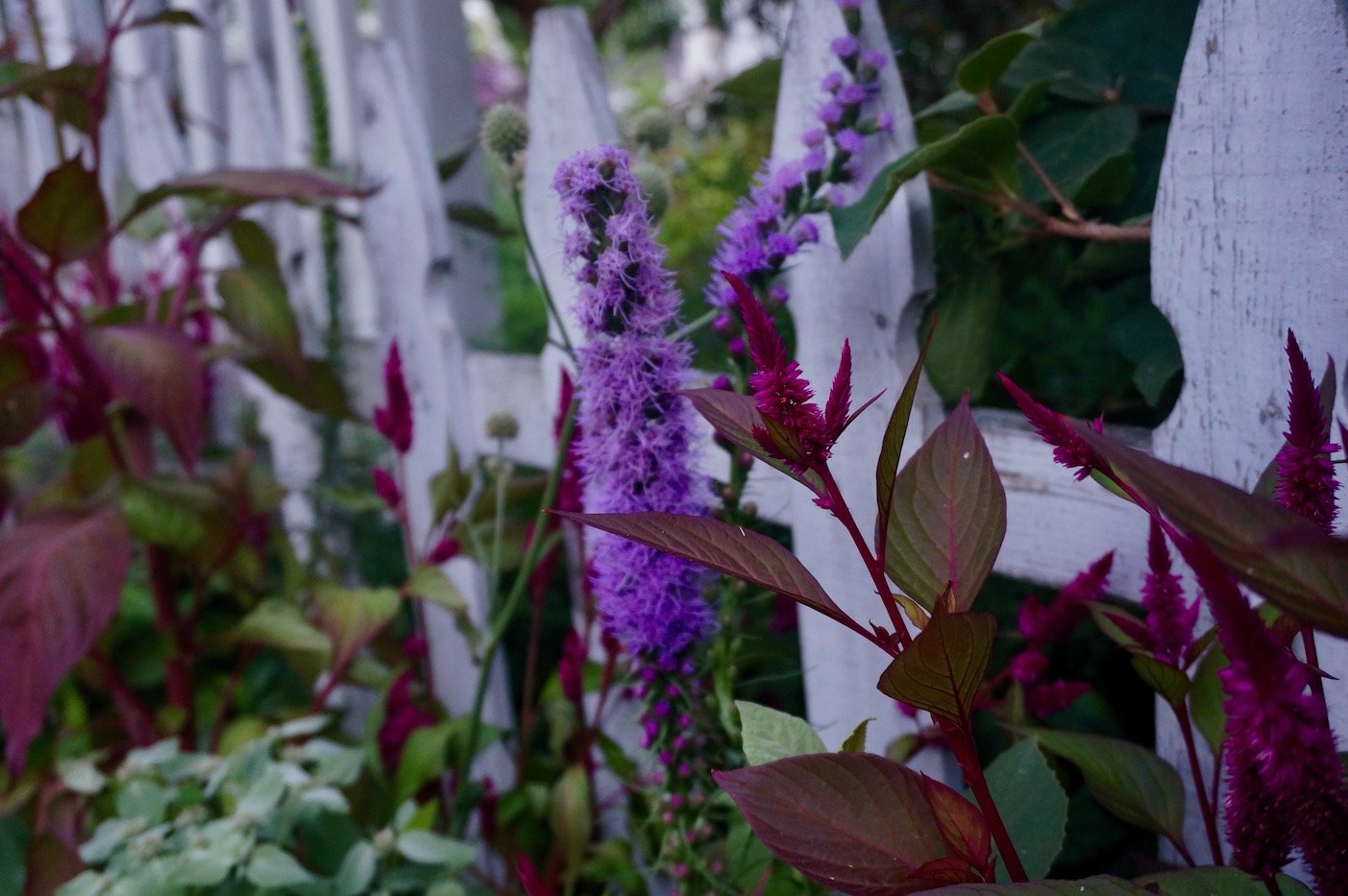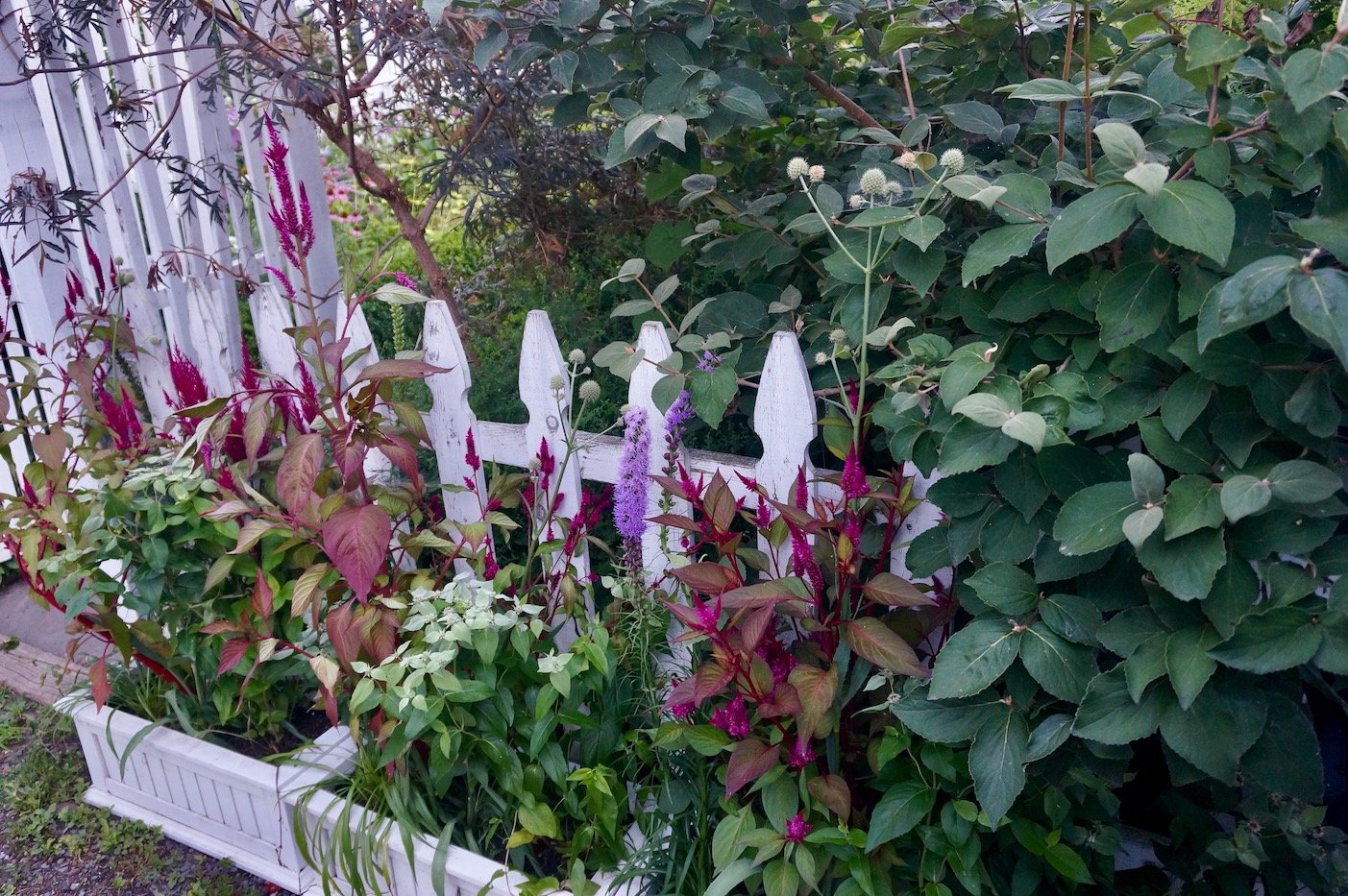Plant native plants in a pot: Easy steps to attract pollinators to your garden
If there was ever a time to introduce native plants into your garden, now is the time - pollinators need all the help they can get. If you’ve thought about adding few, but were unsure of which varieties to choose or how to use them, I hear you. I want more in my own garden, but I’m cautious about planting anything that might take over, be tough to divide or look ratty after flowering. So, the thought of experimenting with some in containers before introducing them to my garden appealed to me.
The idea grew after I read about the Pollinator Pathways Project in Cape Cod , an ambitious endeavor that included planting natives in 140 containers and gardens. CL Fornari, consultant for Hyannis Main Street Business Improvement District and resident plant geek at Hyannis Country Garden explained the idea behind it, “Save the pollinators" movement is just a tiny step in getting the public to think about the importance of native plants and our total local ecosystems. All of the native insects, pollinators or not, have evolved to live in native plants. When they disappear, the native insects do too. Then the native songbirds that eat those native insects disappear. Everything is connected to everything else.”
Beautification is an important part of the equation too. Below is the list of native plants they used, taking into consideration a variety of bloom times, and an assortment of foliage colors and textures.
I can’t think of a better way to encourage people to learn about and use native plants.
It inspired me get going on my own containers. In addition to bloom time, foliage and texture, I wanted to grow some I could introduce into my garden later. Here’s the list I put together.
Native plants for containers
Adiantum pedatum (Maidenhair Fern)
Amsonia hubrichtii (Bluestar)
Aster novae-angliae (Dwarf New England Aster)
Asclepias incarnata (Milkweed)
Carex varieties
Coreopsis
Deschampsia cespitosa (Tufted Hair Grass)
Eryngium yuccifolium
Eupatorium ‘Baby Joe’(Joe Pye Weed)
Geranium maculatum (Cranesbill)
Liatris spicata
Monarda punctata
Pycnantheum muticum
Rudbeckia triloba
Schizahryium scoparium ‘ Prairie Munchkin’ (Andropogon aka Little Bluestem)
Solidago
Tiarella cordifollia (Foamflower)
If you’d like to try it out, here’s the plant recipe for my first two.
Container 1: A composition of 3 natives and one annual - Pycnantheum muticum,Eryngium yuccifolium,Liatris spicata and Celosia.
Pycnantheum muticum
Interesting foliage: In my opinion, durability of foliage makes or breaks a container. I wanted Pycnantheum muticum (Mountain Mint) in my garden because it’s a pollinator magnet. Having no experience with it, I wasn’t sure how aggressive it would be, as it is in the mint family. I can keep my eye on it here and enjoy that lovely fuzzy gray foliage.
Striking flowers: Flowers with unusual seed heads add appeal to a container (and garden). Eryngium yuccifolium (Rattlesnake Master) is certainly one of them. I want to plant it in my garden because it attracts short and long-tongued bees, flies, beetles, and butterflies. This tall (5-6’) stately perennial is well suited to dry soils like mine because of its deep fibrous root system. The flowerhead is in it for the long run - it has an arresting presence even after it flowers.
Color: Showy purple clusters of Liatris spicata (Gayfeather) are well worth waiting for in late July and August. Interesting seed heads and delicate grass like foliage contribute to container worthiness even when it’s not in flower. Bees and butterflies love it.
Add a little extra flower power: To jazz up this container, I added Celosia, a tropical native in the Amaranth family and an annual pollinator plant that attracts bees like crazy. I agree with CL’s comment in regard to annuals, “when we consider the pots on Hyannis Main Street, I believe we need a broader acceptance in that there are VERY few annuals that are native to the Northeast USA that would add any "flower power" to these containers. They used plants such as Zinnias and sweet potato vine that are native to North America if not to New England.
Container 2: I used 3 plants - Amsonia hubrichtii (Bluestar), Solidago rugosa ‘Fireworks’ (Goldenrod) and Aster novae-angliae ‘Purple Dome’ (New England Aster). Not much color yet - these flower in fall and there wasn’t enough room to pop in annuals. I figured the container would brighten up this spot as fall progresses.
Foliage color and texture: Amsonia hubrichtii has already flowered, but who cares? You can’t beat that foliage for texture - and it turns bright gold as fall progresses.
Flowers: Solidago rugosa ‘Fireworks’ (Goldenrod) - When this finally blooms (late September), it really does look like an explosion of fireworks. Both graceful and sturdy. Notes from experiment: I planted this in my garden and trust me, it travels fast! Not invasive but definitely aggressive. Put it somewhere where you can let it rip.
Aster novae-angliae ‘Purple Dome’ (New England Aster) - Asters are one of the latest blooming nectar plants - a must have for any pollinator garden. Most of them get way too big for containers, but this one is medium sized - about 18”. Perfect border plant.
Another criteria worth considering? Height and sturdy stems. Except for the aster, these are all pretty tall plants. Better to pick varieties you won’t have to stake. Other than that, have a little fun! I think you have to be adventurous.
Size and Type of Container: How many perennials and annuals you can put together depends on the size of the container you choose. Use one large enough to accommodate at least 3, like a 20-24” pot. Terra cotta or glazed pottery containers are good choices. If you want to winter yours outside, choose a fiberglass, wood or stone pot. If you choose to overwinter yours, choose plants hardy to a zone below the one you live in. For example, I’m in zone 5-6, so I need plants that are hardy to zone 4.
Soil and fertilizer: I planted my containers in a soilless medium (Miracle-gro) mixed with mushroom compost. I also like Bumper Crop potting soil. Both provide good drainage and extra nourishment for the plants. I only fertilized once with MaxSea (an organic liquid fertilizer) when I planted them. Because this summer has been so dry, I’ve watered every other day. Once it cools off and we get more rainfall, they’ll require less watering. They key is not to let them dry out.
Plant Sources: I was able to buy some of these plants at local nurseries, but many are hard to find. If you live in the Rochester area, it’s worth a trip to Amandas Garden, an excellent small native plant nursery in Dansville, NY. Buying online is a good option too. Here are a few sources I’ve used - plants have arrived in excellent condition and customer service has been good.
Amandas Garden (visit or order online)
Replanting: Take containers apart in October and relocate plants in the garden. I wouldn’t wait any longer than that because they need time to establish their roots before winter sets in. Make sure to keep them well watered. If you decide the plant isn’t appropriate for your garden, give it to a friend or donate it to a garden club.
Final thoughts: Want to be part of the solution? Consider the environmental impact if everyone planted just one container with three native plants, introduced them into their gardens or shared them with a friend. That’s garden synergy at its best!







